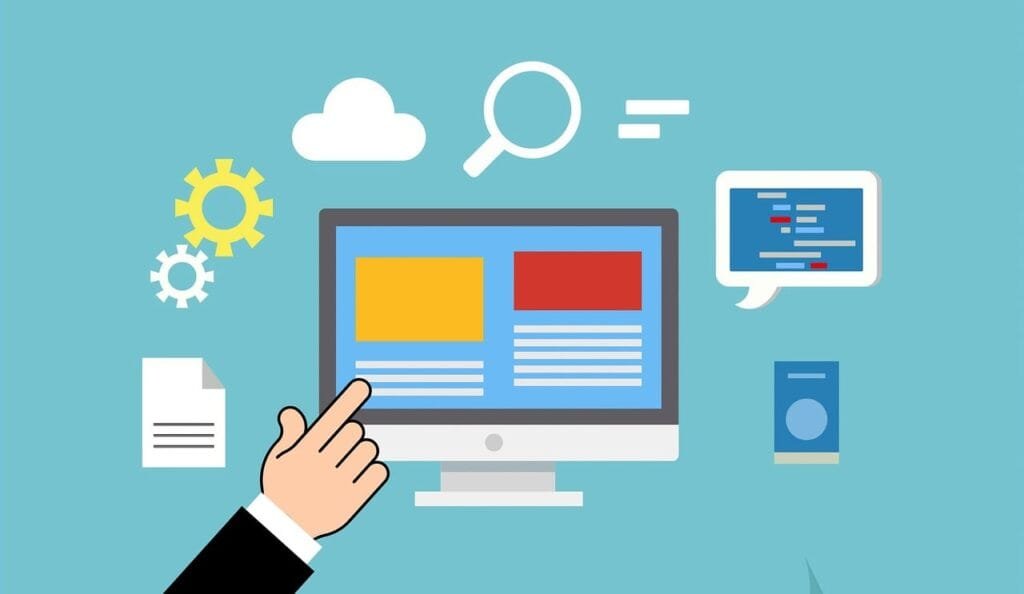Understanding Goods and Services
In the realm of marketing, understanding the definition of goods and services is vital for crafting effective strategies. Both elements play a crucial role in fulfilling consumer needs and driving business success.
Differentiating Goods and Services
Goods and services can be distinctly identified based on their nature. Goods are tangible in nature, meaning they are physical objects that you can touch, see, or feel. Common examples include appliances, clothing, and automobiles (GeeksforGeeks). In contrast, services are intangible activities that do not result in ownership of a physical item. Services can be experienced and provide value, such as consultation services or training workshops.
| Aspect | Goods | Services |
|---|---|---|
| Tangibility | Tangible, physical objects | Intangible, cannot be touched or owned |
| Ownership | Ownership is transferred upon purchase | No transfer of ownership is involved |
| Examples | Furniture, electronics, clothing | Consulting, cleaning, legal advice |
| Consumption | Consumed over time (durable and non-durable) | Consumed simultaneously as they are produced |
Characteristics of Goods
Goods possess several defining characteristics that differentiate them from services, further influencing marketing strategies. These characteristics include:
Tangibility: As mentioned, goods are tangible objects that can be physically handled and stored.
Durability: Goods can be classified as durable or non-durable. Durable goods, such as machinery and tools, have a longer lifespan, while non-durable goods, like food items, are consumed quickly.
Variability: Goods can exhibit variations in quality and features, impacting consumer choice. For example, clothing might come in different styles, sizes, and colors.
Market Demand and Elasticity: Goods display varying degrees of elasticity; some goods experience large changes in demand related to price fluctuations, while others, known as inelastic goods, maintain stable demand despite price changes (Wikipedia).
These characteristics are essential for developing a comprehensive goods and services in marketing strategy, as they affect everything from product development to pricing strategies. Understanding the nuances of both goods and services can lead to more effective marketing and ultimately greater customer satisfaction.
Goods Classification
Understanding the different classifications of goods is essential for crafting effective marketing strategies. You can differentiate goods based on various factors such as durability, consumer type, and the nature of purchase.
Durable vs. Non-Durable Goods
The first classification is based on durability. Durable goods include items that have a long lifespan and can be used repeatedly over time. On the other hand, non-durable goods are typically consumed quickly or have a short shelf life.
| Type of Goods | Definition | Examples |
|---|---|---|
| Durable Goods | Items designed for long-term use | Appliances, furniture |
| Non-Durable Goods | Items intended for immediate consumption | Food, toiletries |
For more insights into various goods types, visit our article on types of goods in marketing.
Consumer vs. Producer Goods
Another classification categorizes goods into consumer and producer goods. Consumer goods are intended for personal use, while producer goods are used in the production of other goods and services.
| Type of Goods | Definition | Examples |
|---|---|---|
| Consumer Goods | Goods purchased by individuals for personal use | Clothing, electronics |
| Producer Goods | Goods used to produce other goods | Machinery, raw materials |
Understanding the distinction between these goods can significantly enhance your advertising goods and services efforts.
Unsought vs. Specialty Goods
Finally, goods can also be categorized as unsought or specialty goods. Unsought goods are items consumers do not actively seek out, while specialty goods are unique and often require significant effort to obtain.
| Type of Goods | Definition | Examples |
|---|---|---|
| Unsought Goods | Items consumers don’t think of buying regularly | Funeral services, life insurance |
| Specialty Goods | Unique items that consumers are willing to go out of their way to purchase | Luxury cars, designer clothing |
This classification helps in developing effective marketing strategies for goods and services that resonate with target audiences. Understanding these distinctions ensures that your approach aligns with consumer behavior and needs.
Services Overview
Understanding the nature of services is essential for developing effective marketing strategies for your business. Services possess unique characteristics that set them apart from goods.
Intangible Nature of Services
Services are primarily intangible, which means they cannot be touched, seen, or physically evaluated like goods. Instead of physical ownership, services offer experiences or benefits that satisfy consumer needs (GeeksforGeeks). For instance, a haircut, a consulting session, or a hotel stay involves a service that provides value through experience rather than a tangible product. This intangibility creates specific marketing challenges, as consumers cannot physically examine a service before purchasing.
Here’s a comparison of the characteristics of goods versus services:
| Feature | Goods | Services |
|---|---|---|
| Tangibility | Tangible; can be touched | Intangible; cannot be touched |
| Evaluation | Can be evaluated before purchase | Can only be evaluated after use |
| Storage | Can be stored | Cannot be stored |
| Ownership | Ownership transfer occurs | No ownership transfer |
| Production & Consumption | Often produced in advance | Concurrent production and consumption |
Experiencing Services
Experiencing services is an integral part of their value proposition. The customer’s experience with a service greatly influences their perception of its quality. You can’t simply market a service as a product; the focus should be on how individuals will interact with it (Investopedia). A customer may judge a service based on the environment, quality of interaction, or the outcome received.
For example, for a restaurant, the overall dining experience includes not just the food but also the ambiance, service staff interactions, and additional offerings; this experience becomes a crucial part of the service’s value.
To leverage this intangible quality effectively through marketing, you might consider enhancing customer experiences by promoting service marketing strategy, emphasizing high-quality interactions, and collecting feedback for continuous improvement. Addressing customer satisfaction for services can lead to repeat business and positive word-of-mouth, which is vital in service marketing.
In conclusion, grasping the intangible nature and the importance of experiencing services will deepen your understanding of how to effectively market your offerings. Focusing on customer engagement, highlighting unique service traits, and delivering exceptional experiences can boost your business in the competitive landscape. For more on the characteristics of services, check out our article on characteristics of services in marketing.
Types of Services
In the world of business, services can be classified into various categories. Understanding the types of services available is essential for effectively marketing your offerings and delivering value to your customers. Here, we will discuss three primary types of services: business services, social services, and personal services.
Business Services
Business services are designed to support the operations of organizations or businesses. These services can vary significantly and are vital for maintaining efficiency and productivity. Common subcategories of business services include:
- Banking: Financial institutions provide services such as lending, investment management, and payment processing.
- Insurance: Companies offer policies that protect individuals and businesses from potential risks and losses.
- Warehousing: Facilities that store goods for manufacturers, wholesalers, and retailers.
- Transportation: Services involved in the movement of goods and individuals from one location to another.
- Communication: This includes telecommunication and internet services that facilitate connectivity among businesses and customers.
Properly implementing a service marketing strategy tailored to business services can lead to sustained growth and customer loyalty.
Social Services
Social services focus on improving the quality of life and well-being of individuals and communities. These services are often provided by government entities, nonprofit organizations, or community groups to support those in need. Examples of social services include:
- Healthcare: Services that encompass medical treatment, health education, and wellness programs.
- Education: Institutions providing knowledge and skills through formal and informal learning environments.
- Housing Assistance: Programs aimed at providing support to individuals and families in need of stable living conditions.
- Counseling: Services that offer emotional and psychological support to individuals and families facing various challenges.
When promoting social services, it is important to emphasize the positive impact these offerings have on the community and individual lives.
Personal Services
Personal services cater to the needs of individuals, focusing on enhancing their day-to-day lives and overall satisfaction. These services are often personalized and can range from routine tasks to specialized offerings. Common examples include:
- Personal Training: Fitness professionals provide personalized workout plans and coaching to help clients achieve their health goals.
- Beauty Services: Haircuts, manicures, and skincare treatments offered by salons and spas.
- Housekeeping: Services that assist with cleaning, organizing, and maintaining a clean home environment.
- Tutoring: One-on-one educational support to help individuals master specific subjects or skills.
Marketing personal services can benefit from highlighting customer testimonials and showcasing the transformative effects these services offer. For more insights into effective marketing tactics, explore our articles on promoting goods and services and advertising goods and services.
Understanding the distinctions between these types of services will enable you to better articulate your value proposition and tailor your offerings to meet market demands.
Economic Perspectives
Understanding the economic roles of goods and services is crucial for effectively marketing your offerings. Here, we explore the definitions and implications of goods and services in an economic context.
Goods in Economics
In economics, goods are defined as items that satisfy human wants and provide utility. They are typically tangible items that can be used, stored, evaluated, taken home, or consumed. Examples include appliances, clothing, and automobiles. A critical aspect of goods is their transferability; you can sell or exchange these items (Wikipedia).
Goods can be classified into various categories, each serving distinct functions in the marketplace. Here’s a simplified view of some types:
| Type of Goods | Description |
|---|---|
| Durable Goods | Items that last for a significant period, such as cars and refrigerators. |
| Non-Durable Goods | Items with a short lifespan, such as food and toiletries. |
| Consumer Goods | Goods purchased by consumers for personal use. |
| Producer Goods | Items utilized by businesses to produce goods or services. |
For a deeper dive into the distinctions and types of goods, check our article on types of goods in marketing.
Services in Economics
In contrast to goods, services are defined as intangible products where the service receiver does not obtain something tangible or ownership. The service sector, often referred to as the third economic sector, is responsible for a significant portion of global business activity. This sector includes a variety of services, such as healthcare, education, and hospitality, which cannot be stored or owned in the traditional sense (Investopedia).
Given their intangible nature, services involve a different set of marketing strategies and considerations. Here’s how services fit into the economic framework:
| Characteristics of Services | Description |
|---|---|
| Intangibility | Services cannot be touched or owned, making evaluation based on performance and customer experience crucial. |
| Inseparability | Services are often produced and consumed simultaneously. |
| Variability | The quality of services can vary depending on who provides them and under what conditions, creating the need for consistent branding and delivery standards. |
| Perishability | Services cannot be stored for later use; they are consumed at the point of delivery. |
For more insights into the characteristics of services and how they impact marketing strategies, explore our article on characteristics of services in marketing.
Knowing the economic definition of goods and services is invaluable as you develop your service marketing strategy. This understanding can greatly enhance your marketing strategy for goods and services, ultimately guiding you in effectively positioning your brand in a competitive landscape.
Tangibility and Ownership
Understanding the tangibility and ownership of goods and services is essential for effectively marketing your offerings. This section breaks down the characteristics of tangible goods versus intangible services, as well as the implications of ownership.
Tangibility of Goods
Goods are defined as tangible items, meaning they can be physically touched, seen, or felt. This characteristic gives them a distinct advantage in the marketplace, as customers can evaluate these products before making a purchase decision (GeeksforGeeks). Tangibility allows consumers to assess quality and value based on physical attributes such as design, functionality, and durability.
Comparison of Tangibility
| Characteristic | Goods | Services |
|---|---|---|
| Nature | Tangible | Intangible |
| Evaluation | Can be evaluated physically | Can be experienced only |
| Ownership | Ownership can be transferred | Ownership cannot be transferred |
Ownership of Goods and Services
When it comes to ownership, goods and services exhibit contrasting features. Ownership of goods can be transferred from the seller to the buyer, allowing you to sell physical products directly to consumers. This transfer is a critical aspect of goods marketing and sales because it signifies a definitive transaction.
On the contrary, services cannot be owned like goods. While customers can pay for services, they only gain the right to use them for a specified period. For example, subscribing to a service or hiring a consultant does not grant permanent ownership. This distinction plays a significant role in how you approach marketing strategies for goods and services.
According to GeeksforGeeks, while goods can be produced and held in inventory for sale, services are performed in real-time when required by the customer. This shifts the focus in service marketing towards the quality of the experience and satisfaction during the service engagement.
Key Takeaways on Tangibility and Ownership
- Goods are tangible and can provide a definitive ownership transfer, which is crucial for sales strategies.
- Services are intangible and do not allow for ownership, emphasizing the importance of experience in service marketing.
- Understanding these differences helps in crafting effective service marketing strategies tailored to your offerings, whether goods or services.
Consider these factors to enhance your marketing approach for both goods and services effectively. For additional insights on classification and characteristics of goods and services, refer to our articles on types of goods in marketing and characteristics of services in marketing.
Goods and Services in Practice
Understanding real-world examples of goods and services is essential for effective marketing strategy development. Knowing what constitutes goods and services can guide you in your approach to meet consumer needs.
Examples of Goods
Goods are physical items that can be seen and touched, which are ready for resale. Here are some common categories of goods along with examples:
| Category | Examples |
|---|---|
| Durable Goods | Cars, appliances, furniture |
| Non-Durable Goods | Food, beverages, toiletries |
| Consumer Goods | Clothing, electronics, books |
| Producer Goods | Machinery, raw materials, tools |
| Specialty Goods | Designer handbags, luxury watches |
| Unsought Goods | Life insurance, funeral services |
Goods provide utility and satisfy consumer needs and wants. For more insights on the types of goods, visit our page on types of goods in marketing.
Examples of Services
Services, unlike goods, are intangible activities aimed at satisfying consumer requirements. Here are key examples along with their classifications:
| Category | Examples |
|---|---|
| Business Services | Consulting, legal advice, accounting services |
| Social Services | Nonprofit outreach, community health programs |
| Personal Services | Hairdressing, personal training, tutoring |
Services focus on delivering experiences or performances that meet specific customer needs. To understand more about service characteristics, refer to our article on characteristics of services in marketing.
Both goods and services are crucial to the marketing mix. Understanding their definition and how they differ allows you to create effective strategies for promoting goods and services or crafting a successful service marketing strategy. эмThese insights ensure you can align your offerings with market demands, leading to improved customer satisfaction and business success.
Importance in Business
Understanding the importance of goods and services in business is essential for effective marketing strategies. Both goods and services play critical roles in satisfying consumer needs and driving business success.
Role of Goods in Business
Goods are tangible items that can be seen, touched, and owned. They serve a fundamental role in the market by meeting specific consumer needs. As a business leader, recognizing the classification of goods can enhance your marketing efforts. Here are some key roles goods play in business:
- Fulfillment of Needs: Goods provide solutions to consumers’ wants and needs. By identifying what products your target market requires, you can tailor your offerings effectively.
- Economic Exchange: Goods facilitate transactions in the market and contribute to economic growth. Understanding the classification of goods can help in pricing strategies and distribution plans.
- Brand Loyalty: High-quality goods can foster customer loyalty. Implementing a strong branding strategy for your goods can differentiate them in the market. Explore our article on branding goods and services for more details.
| Role of Goods | Description |
|---|---|
| Fulfillment of Needs | Satisfy specific consumer needs |
| Economic Exchange | Promote market transactions and economic growth |
| Brand Loyalty | Build customer loyalty through quality |
Role of Services in Business
Services, being intangible, are experienced rather than owned. Their role in business is equally important and requires a different marketing approach. Here are some significant roles services play:
- Customer Experience: Services enhance the overall customer experience. Ensuring quality and consistency in service delivery can lead to positive word-of-mouth and repeat business.
- Flexibility and Adaptation: Services can often be tailored to individual needs, allowing businesses to be flexible and respond to changing market demands. Implement a service marketing strategy to maximize this potential.
- Value Addition: Services complement goods and can create a holistic offering that adds value for consumers. For example, after-sales support or customer service can enhance the overall value proposition of a product.
| Role of Services | Description |
|---|---|
| Customer Experience | Elevate the customer interaction and satisfaction |
| Flexibility | Allow customization and adaptability to market needs |
| Value Addition | Enhance product offerings with supplementary services |
By understanding both the roles of goods and services, business leaders can create effective marketing strategies that address the diverse needs of their consumers. For further insights on how to leverage goods and services in your marketing approach, consider exploring topics like goods and services in marketing and market segmentation for goods and services.




















